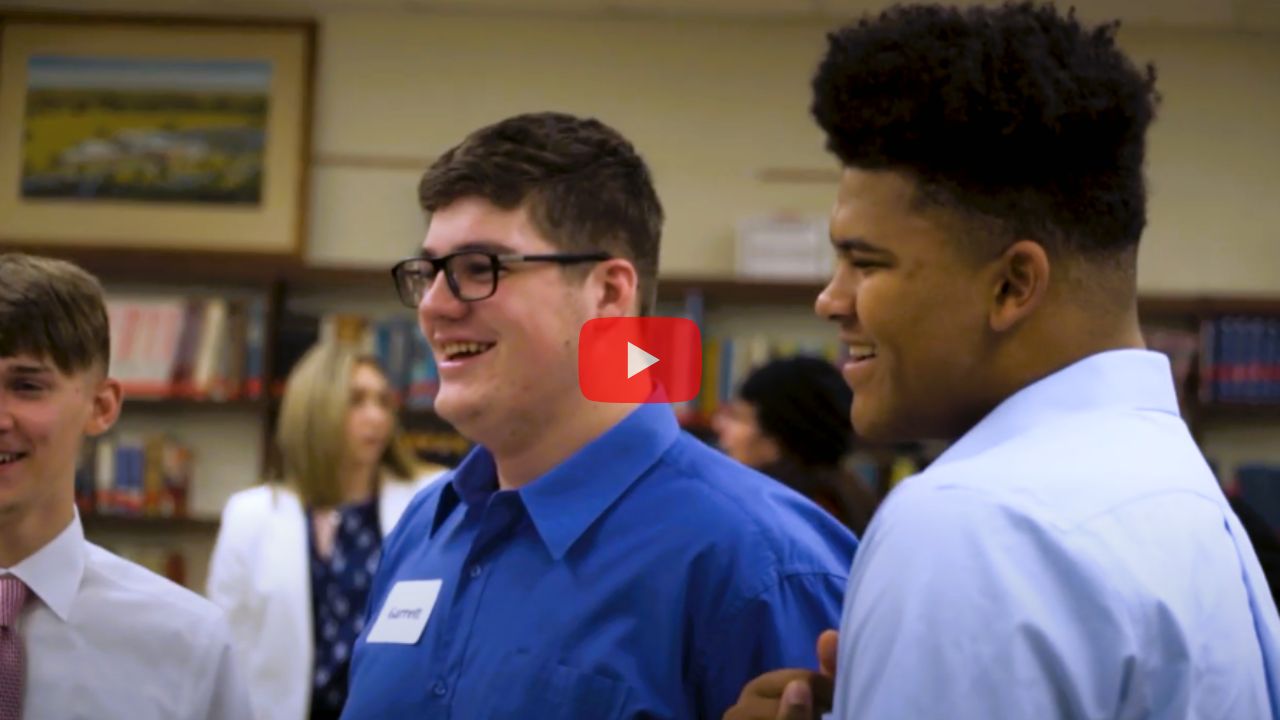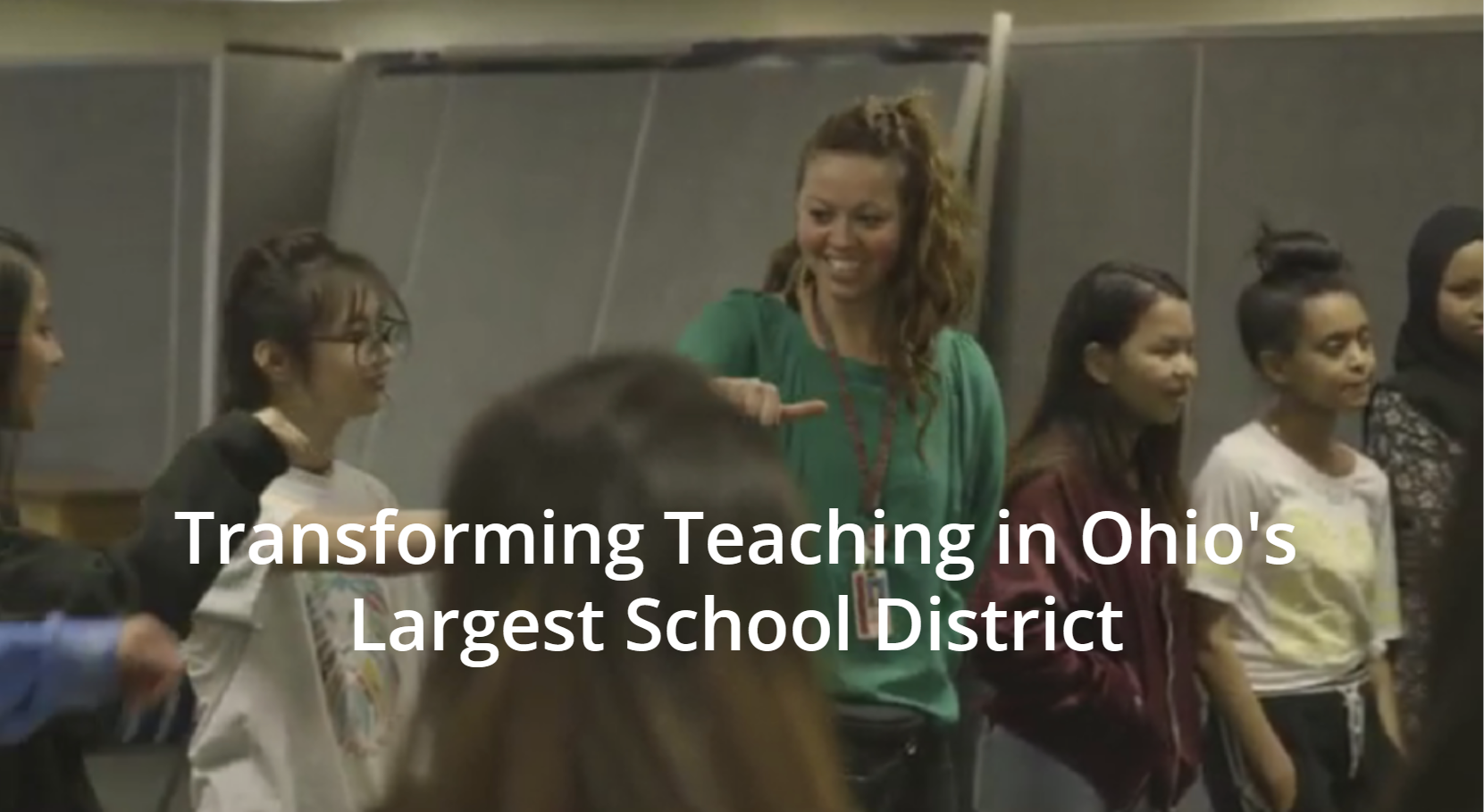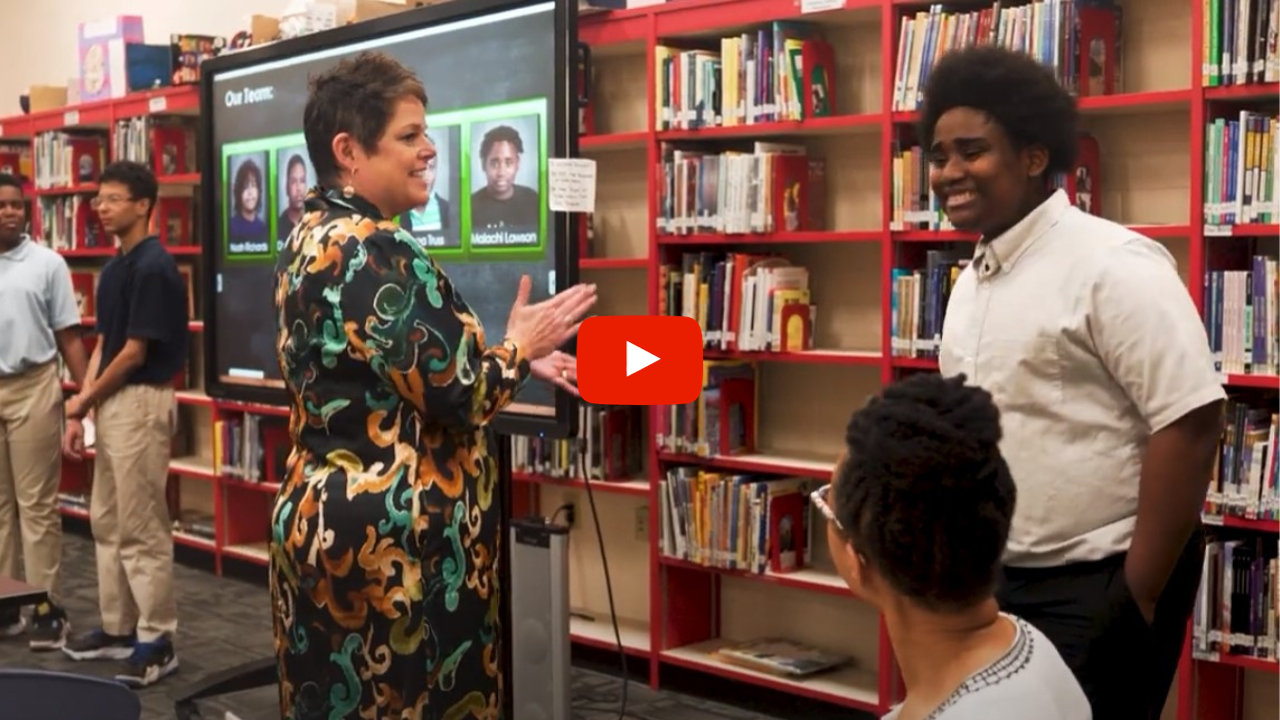In this episode, Doris describes the “decision filter” she uses for choosing which businesses will work with the students. She discusses the reasoning behind her “rule of three” and explains why students must relate to the problem and see the CEO as a role model.
Alison: So being that these business problems are so critical to the entrepreneurships class, how do you find those problems?
Doris: Well, here’s what I look for. So I call it my decision filter. There are certain things I look for. It’s like anything that you do over time. If you do it multiple times, you get better and better at it.
When I talk to teachers, I always talk about the rule of three, which I actually think the rule of three applies to a lot of things. But it also applies to teaching—that it’s really the third time that you do something that you finally feel like, “The third time I teach something, I get this.” This past semester was what, the third year of this? We’re in the third year of this semester program, I think, right? We’ve done this multiple times now.
First of all, I look for a business to consumer type of business. I’m talking about the entrepreneurship class. We’re talking about high school students. So it has to be a business they’re going to be able to comprehend easily. B2B, by the time you explain to a student, by the time they figure out a business to business kind of business . . .
Alison: Yeah.
Doris: They can’t do it. So I look for a business to consumer business so that they’re going to be able to understand it easily.
Alison: Sure.
Doris: It needs to be a startup-type problem. It could be a new product. It could be a new business. It could be a new market for an existing product, but something where they’re starting something new.
Alison: That makes sense.
Doris: That has to be the kind of problem. The CEO—I look for a CEO that’s going to be a role model for the students. If you’re taking this class and you’re in high school, it’s going to be a very unique sort of experience and you’re going to be “all in” working on a problem for a business.
Having a CEO who is a role model, who is both trying to do well and do good and is somebody you could imagine looking up to, that’s really a big part of it. We find that by the second day that they’re working on a business problem instead of saying, “Rustbelt Reclamation,” they’re talking, “We.” They’ve internalized that they’re part of the business.
The problem itself needs to require research that can be done using the general population. That’s really important. They have limited time and they’re going to be doing crazy amounts of market research, not only online, but also in person. Any good research, any good solution requires a richness of research and if the market that they’re working with is very, very specific, then they won’t have the ability in just a few weeks . . .
Alison: To access that.
Doris: So that sounds like a kind of specific thing, but it actually . . .
Alison: Well, I think it’s connected to the first point you mentioned as well, about it being a B2C kind of business. If it’s consumer focused and kind of an everyday, then they’ll have more chance when they get out of the building to talk to an everyday person.
Doris: Right. We use a lot of the more contemporary design methodologies and we’re looking at human-based design in a very real way. If students are working on a problem and at no point during working on the problem are they able to interact with a real person or several, it really takes away from their work.
Alison: Absolutely.
Doris: So for example, there was a business I was very excited about. But the market they serve is the hearing impaired market. I couldn’t figure out a way for our students to have access to enough people within a very short time frame. So that was one.
I think a lot about—the problem has to be substantive enough. You’re going to have four teams in any given semester working on the same challenge. It has to be substantive enough that there are unlimited amounts of crazy learning they’ll need to be doing and racing to do in order to have some sort of solution by the time of their deadline.
The subject matter itself that they’ll be having to learn about I also think about quite a bit. The startup, whatever it is, whether it’s a startup business or a startup product in a new market, whatever it is, the intent needs to be to scale it. That’s really important. I’m going to try to think about how to describe the ways in which it’s important.
Maybe to show a counter-example, let’s say we chose a laundromat down the street that just opened up. All they want to do is be a laundromat on the street. They have no intention of scaling further, etc. That is a real problem. It’s a real a problem. A student could be assigned to how do you do well in this particular neighborhood, but it’s very, very limited in terms of what they’ll need to get into.
Instead, we have this very new model of a laundromat. We want to start on this street, but we want to have one of these in every city in the country within ten years. That then, there are huge amounts of terrain they need to learn and they need to think through in order to analyze what that looks like. The research required to come up with a good solution to scale that laundromat is really good.
They have to poke very hard into what is the problem, the value proposition of this particular laundromat. What is the problem that this particular laundromat solves really well beyond others that is so desirable that it is possible to think about scaling it, then how does one scale it? Then how does this scale in two very different kinds of markets, what do I have to learn about the different markets?
Then there are also the practical issues. What does it mean to scale? So there’s so much that they learn. You can infuse that as a teacher. You can, depending on how you guide them through it, you can get them deep into statistics. You can get them actually deep into some of the sort of systems thinking that you have to do if you’re talking about a national . . . all kinds of things. So that’s one.
Alison: Which is also interesting on the level of getting students engaged to really care about something. I’m thinking it’s interesting. They might not care as much if it’s just one person that would be affected, or one community, but that notion of reaching scale and impacting a number of people might motivate them on a deeper level.
Doris: Could be. I never get to thinking about that because I’m so aware of the limitations of doing a small business. It’s a very different thing to learn about small business. Small business is a great thing to learn about. But that’s not what this is about.
The other thing that I look for is the social impact of the business. Not all of our businesses that we choose have a top line mission statement that includes a social mission as well as a profit mission. But they are all businesses that are grounded in something that does good in some way for the world.
Even if it’s a business that sells, I was talking about Everykey, sells unlocking technology. Their business has an integrity of purpose and a quality of what they do that is important as well. Increasingly, I’m happy to report we are finding most of our businesses have top line, not only profit purpose but social purpose, which is great. We don’t have a separate social entrepreneurship course. We integrate it in everything that we do.
And then the last thing that I look for is actually huge. The timing has to be right. So we’re not fabricating or artificially manufacturing problems for the purpose of giving it to the students. We’re really looking for problems that will result in great learning for students that are the real, “right now,” urgent problem of some business.
So sometimes, many times when I’m talking to businesses, it’s a great business in every other way, but the timing isn’t right. Maybe it’s too late or it’s too early. I’ve had conversations with wonderful business CEOs who, when they realized what we’re talking about, will say, “What problem would you like us to come up with?” which is lovely and natural. I say, “I’d like you to tell me what are the problems you’re facing right now that are really worrying you.”
Many times, the first problem or two or three they mention isn’t going to work well for the students. But at some point they get to one, “Well, I’m also really worried about blah, blah, blah…” and I find one that has all these other elements and that makes it good.
The other thing—I don’t know if I said this earlier. It really has to be something that allows a lot of room for creativity and is solvable to some reasonable standard within a short period of time by a group of four high school students. That’s kind of a summary of it, but it’s really important.
Alison: Do you find it hard to find these kinds of businesses?
Doris: That is a great question. I get asked that all the time. I wish with all my heart I had a way to really effectively communicate how easily I find them now. I’ve talked to many educators who have seen parts of the class, maybe the final presentations or seen some part of this and said, “Wow, that’s really great,” but are completely intimidated by the idea of finding the business. “I’m not at a Hawken. We don’t have an alum base that has businesses. I don’t know anybody in business. I don’t know anybody who knows anybody. “
The reality is that in the first few iterations of this, it was trickier and man, do we have it down. Last May, we had a very challenging spring for a lot of reasons. I didn’t have time to look for businesses for this fall. One day, I realized, “Wow, I really need to get on this.”
I sat down one night and I timed it. I’m not exaggerating. I sat down and from a cold start to two hours later, I sat on my rear end with my computer, did some Googling, sent out a bunch of emails and LinkedIns to people I didn’t know because I did a little research on Cleveland startup whatever. Out of that two hours, enough of them wrote back who ended up having those initial half-hour conversations with me. We found our problems for this past semester, which I think you can attest to the fact that they were awesome.
Alison: That’s right.
Doris: When you get . . . I can look at a website now and eliminate easily immediately, I can eliminate and then the ones where I think, “Okay, that has the possibilities,” that could be good in a half-hour phone conversation, both the CEO and I can figure out if we want to move ahead. So it’s a bit of online research, a half-hour conversation, then another probably one-hour conversation in person or over the phone and then done. We’ve got our three and then there’s a back and forth as we figure out what exactly the problem should be and how to set it up.
And then I do a lot of research beforehand just so that I have a passing knowledge of the industry myself before going in.
Alison: Smart. I’m sure there’s a significant amount of community resources that you can leverage once you’re in the space like you say, after a few rounds of this, now you have contacts in the business communities, the startup communities, incubators, accelerators, that certainly leverages . . .
Doris: You’re exactly right. The other thing that makes it easy now is once you’ve done this a few times and the CEOs have had a great experience. There were some rough start things. But we’ve now had multiple semesters where the CEOs have come out just thrilled with the process, both not having to spend too much time because they don’t have time and with the results. They make the work a lot easier for us now.
Anybody doing this, if you’re teaching a history course and you do the work to setup a good history, real problem for the students to learn the history you want them to learn and you use someone in the community to help with that, the first couple of times are the hardest. Then once you do it a couple times well, it becomes much easier.







